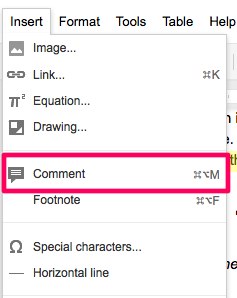Results
See all the blog posts about our distant reading of Duffy’s work.
Rationale
In our class, we’re tackling a very real research question that Carol Ann Duffy has unintentionally provided us: how different is The World’s Wife from the four volumes that preceded it?
You’ve already been asked to take the typical approach to analyzing Carol Ann Duffy’s poetry with a paper assignment that asks you to close read select poems. In “Abstract Models for Literary History—1,” Franco Moretti asked what we might learn about literary history if we stop close reading and instead consider “the large mass of facts.” For our next class project, then, we will be seeing what we can learn by reading the large mass (relatively speaking) of facts in the total language of Selling Manhattan and The World’s Wife.
We will see, in other words, what a digital humanities approach might add to our already rich discussions of her poetry and your own, individual analyses of the differences between the two volumes—differences which, again, Duffy herself brought to our attention.
To do this we will draw on Voyant, a set of tools for text analysis developed by Stéfan Sinclair and Geoffrey Rockwell, to see what we can learn about Duffy’s volumes and her language taken as a whole.
Of course, it’s important to recognize that we might not learn anything earth shattering—or even anything—by taking this approach. That’s okay. We are, to a certain extent, just screwing around. We’re operating here under the principle of experimentation that has guided our class. As Rockwell puts it in his essay “What is Text Analysis, Really?“: “Playful experimentation is a pragmatic approach of trying something, seeing if you obtain interesting results” (214). We’re out have fun and see if we find anything interesting along the way.
The Nitty Gritty
Transcribe Duffy
To start playing, we need a few things. The first of these is a digital copy of the volumes of poetry. We’ll be creating these ourselves. You’re lucky since my Fall 2011 class already transcribed The World’s Wife, so you’ve just got to tackle Selling Manhattan. Prior to 5pm on Monday, March 16, you must do the following:
- Check the “Transcribe Selling Manhattan” tab on the Duffy poems spreadsheet for your assignment. I did my best to make the workload equitable.
- Add the full text of all the poems you’ve been assigned to this document. Make sure you put the poems in the order that they appear in the proper volume. Please italicize the title of the poem.
- IMPORTANT! Please note that before typing up your poems that you should do a Google search for it. Many of these poems are already posted around the Internet, especially on personal, poem-of-the-day type blogs. There’s absolutely nothing wrong with copying and pasting from these sources! However, please look over the text to make sure there are no errors, including punctuation.
- For each of your poems, get a word and character count (both a count WITH and WITHOUT spaces). Do not include the title in this count. You can do this by selecting the text of the poem and then choosing “Word count” under the “Tools” menu.

Add the word count and character count as a comment to the title of the poem.

You can make comments from the “Insert” menu.

Voyant
With our last assignment, we used Google Earth to help find patterns in the movements of characters about London. We then did some interpretation of their different routes, helping us to understand aspects of the novel that were different than what we picked up while reading. Pattern recognition, followed by interpretation.
For Carol Ann Duffy’s poetry, each of your groups will experiment with at least two different tools in Voyant, looking to find patterns and then to interpret them. One of these tools is specified after the group number. For the second tool, you should play with a range of tools, and find which you think will best help you (again) find patterns and interpret them. You’ll want to look at them using both the entire corpus of Duffy’s poetry as a single document and with each book as a different document, as that will affect how the results appear.
Your group should collectively write a 700-word (minimum) blog post about the tools that you used, the patterns you found, and the interpretations you derived from them by the end of class on Thursday, 19 March. Post your work on one of the group member’s blogs.
Remember, we’re out to ask questions about whether The World’s Wife is different from Selling Manhattan (and Duffy’s other volumes that were published prior to 1999). Voyant will give you the ability to look at language as discrete chunks.
Group 1 (Word Trend Differences, see here)
- Nicholas
- Matthew
- Noreen
- Daniel
- Savannah
- Hana
Group 2 (Microsearch)
- Elyssa
- Brandon
- Nancy
- Justine
- Abby
Group 3 (Collocate Clusters)
- Lily
- John
- Caroline
- Ashley
- Jayme
Group 4 (Bubblelines)
- Maida
- Erin
- Joyce
- David
- Benjamin
Grading
As an experimental class project, you are not being graded on what you and your group find about Duffy’s poetry. After all, we simply don’t know what we’ll find, if anything. Instead, you’ll be graded on (1) whether you accomplish all the parts of the assignment (pass / fail), (2) how engaged you are with the work and your group, and (3) how well you apply the method of pattern recognition / interpretation we’ve been embracing throughout the semester.
